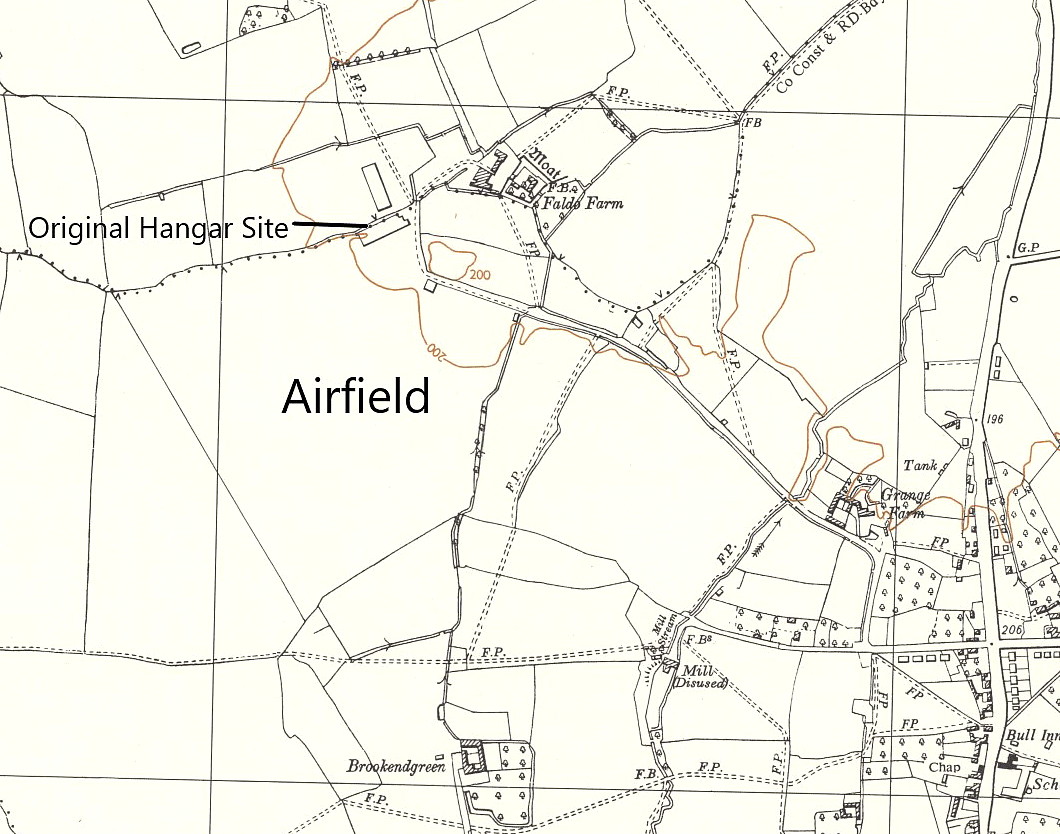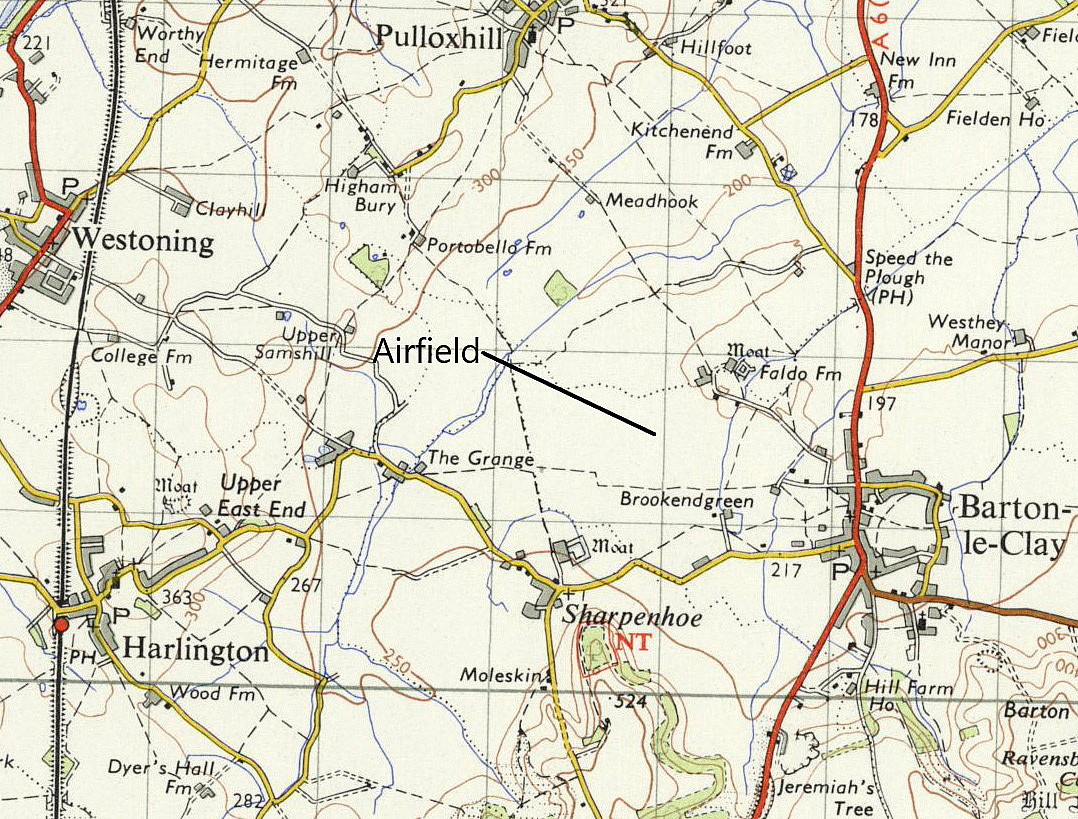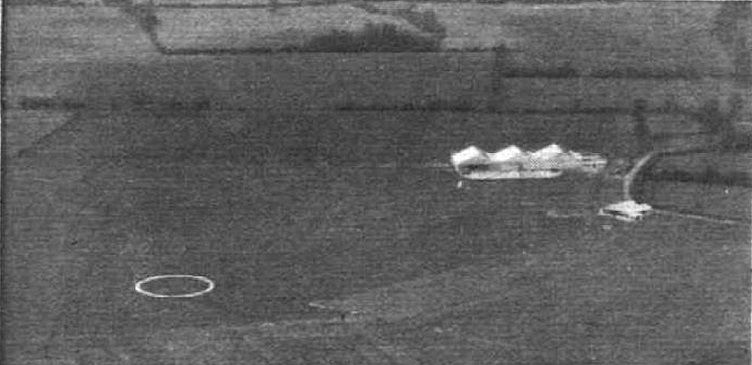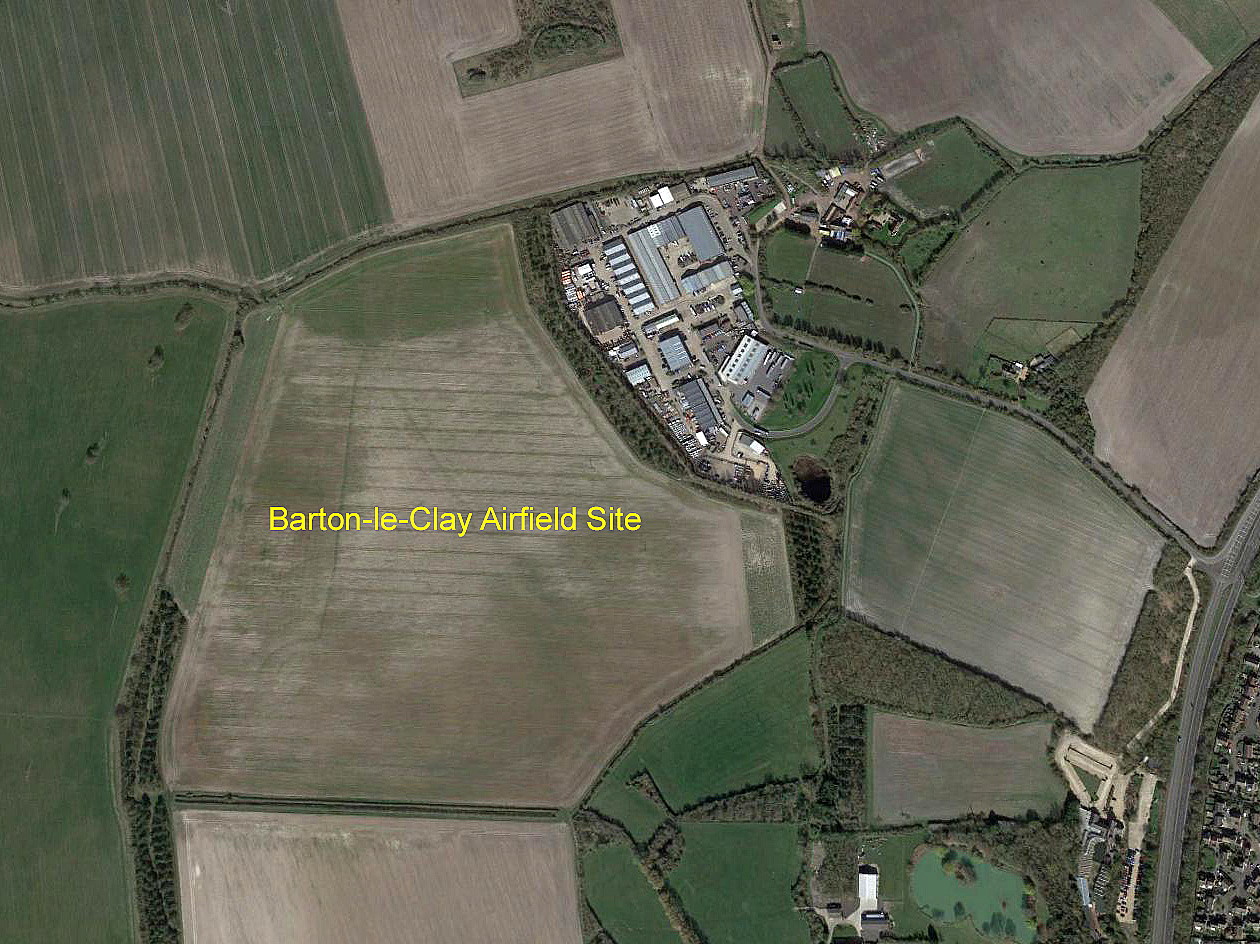Barton-in-the-Clay
Note: Some time ago I made this comment: "Now known at Barton-le-Clay, this map only gives a general position within the UK. If anybody could provide a more exact location for this aerodrome, this advice will be much appreciated."
In January 2018 I was kindly contacted by Terry Clark who sent a link to a map. I haven't reproduced this because there are probably copyright issues. But at least the map above now shows the correct location. What is interesting is that the map appears to show evidence of this airfield being used in WW2.
BARTON-in-the-CLAY: Civil aerodrome (Aka BROOK END FARM)
Note: In February 2021 Mr Michael T Holder kindly provided this gallery of maps and pictures.
Operated by: Bedford School of Flying
Location: Near Barton-le-Clay, (as now known), on the A6 about 7nm N of Luton town centre
Period of operation: 1935 to 1946?
NOTES: The Avro 594 Avian III G-EBWK was registered to the Bedford School of Flying at Barton-in-the-Clay during this period. The Luton Aircraft Company were also based here initially offering kits and material packs for the Mignet design of the “Flying Flea” but they then went on to design and build the very safe, (by comparison), Luton Minor which was also intended for home-builders and to replace the “Flying Flea” which had very quickly obtained a poor reputation resulting from numerous crashes.
It should be noted that there was nothing wrong with the Mignet 'Flying Flea' design as such, it was just that so many builders lacked even basic knowledge regarding how aeroplanes fly, such as taking into account weight and balance factors, the centre of gravity and so on.
A CRACKING GOOD STORY
In his great book, Tail Ends Of The Fifties, compiled and edited by Peter G Campbell, the last of a triology, there is an most interesting account by Lt. Cdr. J.S. Sproule RN, from which I will quote just this regarding the Aeronca C.3:
"Most of the Peterborough-built Aeroncas found owners and quite a number of them were operated by the clubs between 1936 and 1939, notably at Hanworth and Lympne. They provided really cheap flying which was usually about 25 shillings per hour dual and £1 per hour for solo. One school advertised an all-in price of £14
for an 'A' license, the PPL of the time." (My note, by the 1980s, and pretty rare, such an offer would have been around £3,500 at best).
"So, when the opportunity came for me to fly an Aeronca in 1938, I had begun to be aware that this funny looking little aeroplane was not such a joke as it first apeared. The Aeronca C.3 which I first flew at Barton-in-the-Clay - where I had got my 'A' licence under the subsidised Civil Guard Scheme - was called "GLADYS" being registered G-ADYS. A justifiaby nervous instructor scewed up his courage sufficiently to crouch beside me in the cabin on a quick circuit, and for a quid an hour I was off."
"I enjoyed the aeroplane from the start. To me, weaned since the age of thirteen on gliders - and in 1938 built like a whippet - 40 hp was a surfeit of power; flying in a two-place cabin ship, albiet only two-cylindered and wire-braced to boot, was big stuff indeed. I could, moreover, get hold of G-ADYS whenever I liked as all the other chaps at Barton showed a marked preference for the more powerful Moths and Avians."
This is something I can easily relate to: I did most of my flying training on Cessna 152s - a much derided and looked down upon type. But, right up until the end, every now and again I got a chance to fly a 150/152 and thoroughly enjoyed the experience. They are a great trainer, and, for a bit fun, can be thrown around the sky very safely. Indeed, on one flight with a passenger wanting to do something quite adventurerous, he was quite convinced I had turned it upside down! It was just a chandelle but to me, proved the point that you can give so much pleasure and excitement, even in a non-aerobatic type.
AN END NOTE?
In June 2023 Mr Graham Frost, a great friend of this 'Guide', found an entry in the civil aircraft register. This states that the Short S.16 Scion Junior 2, G-AEXF, was registered to Pobjoy Airmotors & Aircraft Ltd, from 27.03.42 to 01.08.46 - and, based here!
Another aspect of its history is that it was previously registered to Elders Colonial Airways at Freetown, Sierra Leone, from 18.06.37 to around January 1938, but had found its way back to the U.K. It appears it was converted to being a landplane in November 1941. What intrigues me is that this period was pretty much at the end of the German Nazi Blitz campaign, and when the U.K. was very heavily involved is trying to turn the war around. Indeed, it was converted around a month before the U.S.A. declared war on Germany on the 11th December 1941.
Therefore, when the British government were exhorting the population to "turn all hands to pump" so to speak, somehow it was found necessary to convert the Scion to a landplane. There must have been a reason, but what could that have been?
Terry Clark
This comment was written on: 2017-12-25 21:10:59On the west side of the A6 just west of your marked is a road leading to an industrial site. This is where the buildings associated with Luton (Barton) airfield were situated and the airfield is the large field just south west of these. When you drive to this indstrial site to the car park, you can see many of the buildings have an 'aviation' feeling about them!
We'd love to hear from you, so please scroll down to leave a comment!
Leave a comment ...
Copyright (c) UK Airfield Guide



















